objet A.d
E + Z = objet A.D / Object 80 (LXXX)
E. Reisig (b. 1993: Los Angeles, California) + Z. Baker (b. 1991: Salem, Massachusetts): “objet A.D” marks their collaborations. Beginning in 2023, they work as the gallery’s curator (and E. is the gallery’s owner). Positioned between the occupations of art-dealer, cultural worker, archivist, researcher, and artist, their curatorial work functions as an extension of the doubled form of their combined practice. Inhabiting this relational, interstitial mode tracks the drift of artwork along figural, biological, institutional, cultural, economic, and political limits staked between bodies and structures or systems. Between organisms and de/naturalized environments.
Their practice centers on indistinctions between artwork and work (labor), as well as ambiguities between psychic and material processes, resources, or economies. (Ambiguities between altered states and changes of phase.) At Reisig and Taylor Contemporary, their curatorial role combines their distinct backgrounds and trainings in order to advance the gallery’s program through research, writing, and documentation, as well as construction/installation of subjectiles (supports and adjacent fixtures) and the gallery-space. They work with the gallery as a deep time process, and as a kind of land artform.
Their artistic practice begins autobiographically, but ends-up wandering through someone else’s dream (or someone else’s reality). Drawing on experiences ranging from psychiatric hospitalizations and arrests by police to lovers’ trysts and family dinners, their work examines (figural and material) bodies as seams between lucidity and delirium, regulation and insurrection, memory and hallucination, familiarity and alienation. But these experiences or memories are always corrupted, already recorded-over again and again. This double-transcription is echoed in the back-and-forth mark-making or recording of two bodies along a single work. An eclipse. Presence and absence.
Curatorial Statement:
“Blurring (art)work and labor, as well as art histories and material histories, we work with positions, orientations, realities, relations, economies of bodies and populations through whatever means possible. And we are always thinking about the market, about the economy of art as a medium—about the cultural-industry and our position within it (or without it). About bodies being bought and sold. About work, value, and class. As art-workers and art-dealers as well as artists and writers, our curatorial role combines these distinct but economically connected occupations. We organize our curatorial work around artforms that challenge regulatory, hierarchal, and oppressive systems. We remember that the approach to how something is studied and displayed definitively changes how and what it is—so we keep our approach circling through multiple versions of itself. And all of this turns on a question we cannot stop asking ourselves: how do we keep-track of ourselves? Or, how do we keep-up with what we are producing, what we are saying? (Along these lines, the documentations of our curations always have at least two ways: a release, a diagram; and, often, some kind of epilogue that responds to the initial release.)
Our trajectory gravitates towards practices that work against repressive forms through material, embodied, and process-driven artworks across all mediums, with a particular focus on works that disrupt normalized modes of observing, limiting, recording, or timekeeping. Moving from local, often autobiographical instances to broader global, planetary, or cosmological questions, we follow interconnected systems operating on bodies through kinds of work: transformation, transaction, technology, exchange, production, and destruction. We keep-track of a body and its work as a place-holder (and shared starting-point) between these forces and circulations, and as a potential to derange any readymade systems (while also making-use of them). A record that records altered states, changes of phase—shifts and sublimations. A process and its processing. We work with a body as the horizon of work (with others).”
|
Select Writings:
“Little Blue Dolls (Preliminary Materials for a Theory of the Afterlife)”
Transversals Issue #5: “Dead Futures,” Fall 2024.
https://www.transversals.net/product/dead-futures/
[With contributions by Zachary Baker (object 80), Shaoni C. White, Julia Dzwonkoski, in8 iĐ, D. Sloan, Zack Pieper, Connor Grogan, and Tim Johnson.]
{This project is supported by The Generator Fund, a grant for artists administered by The Buffalo Institute for Contemporary Art and funded by the Andy Warhol Foundation for the Visual Arts.}
“Techniques of the Global: Race, Territory, and the Coloniality of Reason”
Africa Today Vol. 63, No. 2, Winter 2016 (Indiana University Press)
http://www.jstor.org/stable/10.2979/africatoday.63.2.17
[Forum Contribution from Spring 2016 Area Studies Symposium: African Studies and the Challenge of the Global.]
File.
|
Curated Exhibitions, Presentations, and Projects with the Gallery:
+ Lindsey Harald-Wong, Narong Tintamusik, Catherine Menard, Daniel Schubert, October Anderson, Mayolo Figueroa, Kento Saisho. limina, lumina,, . Reisig and Taylor Contemporary (Los Angeles: 4478 West Adams Boulevard). October 19 - November 23, 2024. [Press Release]
+ Allison Arkush, Maccabee Shelley, Luc Trahand, Sinclair Vicisitud. spleen iiiii. Group Exhibition. Reisig and Taylor Contemporary (Los Angeles: 4478 West Adams Boulevard). July 27 - August 31, 2024. [Press Release; Diagram]
+ Claudia Rega, Xiao He, objet A.D, Chris Reisig and Leeza Taylor. Good Grounds, Drowned Meadows. Political-Economy Project. Reisig and Taylor Contemporary (Hamptons Fine Art Fair). July 11 - July 14, 2024. [Press Release]
+ Saun Santipreecha. ...These Things That Divide The World In Two.... Solo Exhibition. Reisig and Taylor Contemporary (Los Angeles: 2680 South La Cienega Boulevard). May 25 - June 22, 2024. [Press Release; Diagram; Catalogue Forthcoming]
+ Xiao He, Rudik Ovsepyan, Reisig and Taylor, objet A.D. To Market, to market. Political-Economy Project. Reisig and Taylor Contemporary (San Francisco Art Fair). April 25 - April 28, 2023. [Press Release]
+ Jackie Castillo, Shabez Jamal, Sarah Plummer, Xiao He, Cesar Herrejon, Magaly Cantú. There's no telling time. Group Exhibition. Reisig and Taylor Contemporary (Los Angeles: 2680 South La Cienega Boulevard). April 13 - May 18, 2024. [Press Release; Diagram]
+ Claudia Rega, Frantz Jean-baptiste, Grant Falardeau, Xiao He, Daniela Soberman, Rudik Ovsepyan, Sinclair Vicisitud. Other Days. Group Exhibition. Reisig and Taylor Contemporary (Los Angeles). March 2 – April 6, 2024. [Press Release; Diagram]
+ Saun Santipreecha. PER/FORMATIVE CITIES | A Nest of Triptychal Performances. Off-Site Solo Installation (Co-Producer: Luc Trahand). Curated by Camilla Boemio (Presented by objet A.D). AOC F58 Galleria Bruno Lisi (Rome). February 29 - March 15, 2024. [Press Release]
+ Rudik Ovsepyan, Suwichada Busamrong-Press, Erica Everage, Sinclair Vicisitud, objet A.D, Chris Reisig & Leeza Taylor. After. Off-Site Group Project. The Culver Hotel (Culver City, CA). Winter - Spring, 2024.
+ Ibuki Kuramochi, Marley White, Allison Arkush. A Tender Limb. Group Exhibition. Reisig and Taylor Contemporary (Los Angeles). January 27 - February 24, 2024. [Press Release; Diagram]
+ Suwichada Busamrong-Press. Chapter 2: A Long Way Home. Solo Exhibition. Reisig and Taylor Contemporary (Los Angeles). November 18 - January 5, 2024. [Press Release; Diagram; Catalogue]
+ Ari Salka, Erica Everage, and Kento Saisho. Skins, Holes, and Hovels. Group Exhibition. Reisig and Taylor Contemporary (Los Angeles). October 14 – November 11, 2023. [Press Release; Diagram]
+ Rudik Ovsepyan. Magaxat | Survey (1976 - 2023). Historical Survey. Reisig and Taylor Contemporary (Los Angeles). August 26 - Sepetember 23, 2o23. [Press Release; Catalogue: (Part 1, Part 2)]
+ Saun Santipreecha. Dandelye—or, Beneath this River’s Tempo’d Time We Walk. Debut Solo Exhibition. Reisig and Taylor Contemporary (Los Angeles). July 1 - July 29, 2023. [Press Release; Catalogue]
+ Daniela Soberman, Keywan Tafteh. No Plateaus. Dual Exhibition. Reisig and Taylor Contemporary (Los Angeles). May 20 - June 17, 2023. [Press Release; Catalogue]
+ Rudik Ovsepyan, Sinclair Vicisitud, Chris Reisig & Leeza Taylor, objet A.D. Wake. Political-Economy Project. Reisig and Taylor Contemporary (San Francisco Art Market). April 20 - April 23, 2023. [Press Release; Catalogue]
+ Sinclair Vicisitud. I write on walls to talk to you (The Shape of the Throat Croaks). Debut Solo Exhibition. Reisig and Taylor Contemporary (Los Angeles). March 25 - April 15, 2023. [Press Release; Diagram; Catalogue]
|
….
Z. Baker (B.A. Hampshire College; M.A. Comparative Arts: Indiana University, Bloomington; -Ψ Researching Non-Analyst.)
E. Reisig (Hampshire College; Otis College.)
__
Installations with Reisig and Taylor Contemporary:
1. 4478. Grundrisse: Gallery Structure (1). Preliminary Materials for a Theory of the Gallery. object 80. September 28 – October 12, 2024. Gallery Structure series.
0. Blue Print. Gallery Structure (0). objet A.D. May 6 - May 12, 2023. Gallery Structure series.
34.03257659309928, -118.33773906153222.
4478
Grundrisse: Gallery Structure (1)
Preliminary Materials for a Theory of the Gallery
Workers: object 80, Chris Reisig
Duration: September 28 – October 12, 2024.
Location: Reisig and Taylor Contemporary (4478 W Adams Blvd, Los Angeles, 90016).
Type: Gallery Structure series.
Release: File.
Supplements: Labor/Time Key; Voyager 1 Golden Record: Cipher.
Documentation: Works.
____
____
A house skin can be
— Ariana Reines, The Cow[1]
….
4478. Grundrisse: Gallery Structure (1). Preliminary Materials for a Theory of the Gallery. September 25 - October 12, 2024.
3 or 4 (or 5) piles, 2 or 3 puddles. A wall. a drip, one tear. A weight. A wall. 3 blocks. Paws. A pool, a hole. A wall. 2 eyes, Mouths. A Wall. Some bones. Wax. Some scales. Ribbon. Two doors. A skin. A house. A wall.
Light, dark. All night.
A skin a house can be.
…Now if I could just get in there….
(Don’t worry, we’re just talking to ourselves in public (again).)
….
(Draft 3)
Following the installation of Blue Print: Gallery Structure (0) at Reisig and Taylor Contemporary location 0000 (2680 South La Cienega Boulevard, 90034) in Spring 2023, this work occurs as the second iteration in the gallery’s ongoing Gallery Structure series. This series processes the material, historical, social, economic, and conceptual constructions of the Gallery as a cultural industry or marketplace and a physical room built between bodies and passages.[2] (A store/house?) A processing of the rates, languages, limits, substances (and narcotics) of the gallery. A questioning of how to ask foundational questions.
What is a gallery? While Blue Print focused this question on some of the intrinsic, internalized symbols and tropes of the gallery, the current installation at 4478 West Adams Boulevard, 90016 (location 0001) moves towards extrinsic, external but embedded, material economies and logical structures of the gallery. From its tragedies to its comedies, and back again. (The installation and this text is a draft that continues to be worked-on and altered, redrafted, throughout its duration.) 4478 turns to the ‘building-blocks’ of the gallery: matter, energy, transformation, information, observation, language, calculation, transmission, and condensation (or gelling).
Or, maybe, like us, the gallery is just talking to itself. (Sun, soil,) concrete, plaster, wood. In tongues, with teeth.
But how can we keep-up with our own language? Maybe like this.
In any case, the work is a demonstration of the work of the gallery (recursively: in its own language).
What does it mean to be a place that shows (and sells) works of art? (What is the value of the gallery?)
Beginning at its foundations, 4478 (Grundrisse) (or ‘4478 (Foundations[3])’) works-through the landforms and architectures of the gallery as a developmental and relational structure—and as a record, database, or archive—organized and produced through coded (coated) forms of physical and cultural labor. Starting with its address (4478), the gallery is talking to itself in its own language. (It is like one of those shows where all the museum or gallery workers ‘get’ to install their own work for a show—except we also own the means of production!) This is a way of working with the materiality of labor and time through the contexts of the gallery. By literalizing, displaying, documenting, and performing a reading and writing—a de/ciphering—of the gallery’s forces, logics, and structures, Gallery Structure (1) is a process of a gallery (beginning to) give an account of itself and its surpluses. A work with the gallery as a transformative technique of the body: sitting, standing, saying, showing…working.[4] And an orientation of a gallery as a localized but unsettled structure and self-conscious process, instead of a gallery as an anesthetized reproduction or result of established systems of wealth, accumulation, and capital.
Lately, there seems to be some sort of ‘identity crisis’ going-around the contemporary art scene in the U.S. and internationally. (Don’t worry, though: it’s a good crisis.) This is evident in the growing demand for, and increasing establishment of, different approaches to “the gallery,” ranging from renegade artist initiatives (like O’Flaherty’s in NYC) to micro-galleries and homegrown art spaces—and galleries in disused historic buildings (like SHED projects in Cleveland, Ohio). While many of efforts are just re-stylings of the norm, just dressing-up as if Daddy’s hat has fallen off, there are also plenty of efforts that are forcing galleries to ask important questions about the ways in which they function and how this relates to the artists they work with and the exhibitions they present. With this installation, we are taking this instability of the gallery as a starting-point for asking how to work with this unstable structure. How might a gallery remain with its instability without becoming catatonic?
Initially, this installation hypothesizes the structural necessity of a gallery as an unavoidable medium or exchange between readymade planetary systems and the (extra)terrestrial evolution of techniques of a body. A necessary exchange between structure and delirium. Between organized bodies in orbit and a body set adrift….
The work begins literally, rigorously. We begin to work with the building of A Wall (2024-). Since a wall seems to be one of the most necessary, or at least most enduring, structural features of a gallery, this is a practical place to begin the practice of theory of the gallery. (Maybe even more so than the actual foundation, the building of the wall seems to constitute the founding act of the gallery.) A Wall is built over the course of the exhibition. This practice of slowing-down the cyclical movements of the gallery demonstrates a connection between delirium and clarity at the level structure: like the phases and physics of particles, the structure of the gallery only seems to make sense at a certain distance, and at a specific speed. (And once I am near enough I cannot tell the difference between some fuzz on the floor and the span of the cosmos.) This initial moment of (mis)recognition produces an identity crisis that most often leads to attempts at disappearing the position of the gallery beyond the vested heredity of a name (of the father): “Reisig and Taylor (Contemporary).” But this disappearing act is already doomed to fail, since a gallery must always appear at the place of a “don’t look.”
So what would it mean to slow-down (or sometimes speed-up) enough to keep track of the invisible forces, forms, and formulas of the gallery? How does a gallery demonstrate and display its necessary structures, and not only what it wants to show (the structure of its desire)? Or, what is the socially necessary labortime of the gallery? How does a gallery work? And at what value? At what cost? How does a gallery learn to speak its own language (to itself)? In order to begin to address these questions—if only to produce more questions—the works composing this installation deal in part with measurement, calculation, logic, architecture, distance, observation sampling, time, condensation (and gelatin). These syntactic tractions among the works provide a minimal grammar of the gallery’s language, the limits required to communicate a void. (As if I were try to explain a gallery to extraterrestrials, it is a matter of how to say nothing while still saying something). Ultimately, this halting pace of deconstructing the gallery from within unlocks connections between the local processes and programs of the gallery and the deep time that populates its structures.
What are the gallery’s structures? What is the gallery made of? And what makes-up the gallery? (Is this all absurd?)
(Sun, soil,) concrete, plaster, wood. Building itself from scratch and addressing itself in its own (alien) language, the structure of the gallery is worked-with as a medium—as a kind of (“no-Man’s”) land: place, space, light, and time. And a as a mode of address. 4478. 90016. A (failed) transition between image and information. 34.03257659309928, -118.33773906153222. A rhetoric or figure of speech. (Sun, soil,) concrete, plaster, wood. A timeframe. 0009/0028/2024 - 0008/0012/2024. A transmission. 1000101111110. A fit, a start….
… And also a negativity. An address to the void. Or at least a certain amount of negative space (1200 square feet, in the case of the gallery). But a negativity that resists the usual connotations of an emptiness or a negation. It is not nothingness. It is a real negativity. And a logical opposition (blank walls | signed objects). A logic of negative magnitude.[5] (Maybe even a gallery’s disappearance might be made to count for something, after all.)
(Sun, soil,) concrete, plaster, wood. Gelatin.
A skin a house can be.
{The complete installation text is accessible here.}
.
.
.
.
/Questions, Alternations/
a. How and why is time measured with space? How is information is converted into space and time? Or, what is the relationship between distance and history?
b. How are samples (aliquots) collected? Or, how is an activity or event recorded as data and how is the resulting information stored? Or, how is an energy emission—(thermodynamic) work—such as a radio wave, rendered into an image and a measurement, such as a wave, and a frequency or a wavelength? How is this recorded observation (and translation) verified?
c. How do these generalized circuits between work, exchange, record, and (re)production recur—or are only made possible through—human processes of rendering their environment into a legible, calculable, inhabitable, structure?
d. What is the relationship between work, (artistic) creation, duration, and value? (And, what is the difference between work, labor, creation, and production?)
e. What is the relationship between calculation (of structure) and delirium (of symbolics and imaginaries)?
f. What is a gallery’s bodily function as a medium between physicals (environments), work, and cultures.
g. What are the fundamental instruments and techniques of the gallery?
/Parameters/
Location/
> Address: 4478 ~ 1000101111110[6]
> Zip Code: 90016 ~ 10101111110100000
> Coordinates: 34.03257659309928, -118.33773906153222 ~ 100010.00001000010101101111, -1110110.01010110011101100001
Expenditure/
> Month: $110110101100000.00
> Year: $1000001101000000.00
Equivalence/
> Weight: 4478g = 9.872lbs
> — : 0 , | : 1 [ 4478 = 1000101111110 = |— — —|—||||||— ]
Labortime (Aliquot (Metronome))/
> 1 minute of labortime ≈ 1.11 inches of work = 1.11 inches/minute of labortime ~ 1.00011100001010001111 inches/minute of labortime[7]
> 1.11 inches/minute x 1.11 inches/minute = 1.2321 square inches/minute ~ 1.0011101101101010111 square inches/minute of labortime
Area/
> 1200 square feet = 14400 square inches / 1.2321 square inches/minute ≈ 11688.58 minutes of total gallery labortime ~ 10110110101000.1001010001111010111 minutes of total gallery labortime
Frequency/
> 1.11 inches/minute = 0.0185 inches/second = 0.0185 Hz = 0.0000000185 MHz labortime (where a single cycle corresponds to 1 inch of travel), 0.0185 Hz ~ 0.00000100101111000111 Hz
Dog Years/
> 1 bone ≈ 2 weeks of (intermittent) gnawing ≈ 0.1 bone/hour = 0.000005 bone/minute ~ 0.00000000000000000101 bone/minute
> 1 bone ≈ 2 weeks of (intermittent) gnawing ≈ 26 bone/year (26 dog years per 1.0 Julian year or per 1.00068 calendar years) ~ 11010 bone/year
> 1 Julian year ≈ 7 dog years ~ 111 dog years per 1 Julian year
> 26 bone/year / 7 dog years = 3.714 bone/dog year ~ 11.10110110110010001011 bone/dog year
Laikas/
> 1 year = 525600 minutes ≈ 3679200 dog minutes ~ 1110000010001111100000 dog minutes
> 53.82 minutes of runtime (on Voyager 1 Golden Record) ≈ 0.000714 dog years ~ 0.00000000001011101101 dog years
> 0.000714 dog years = 1 Laika ~ 1 Laika
> 0.000714 dog years of Golden Record / 3.714 bones/dog year = 0.00019224555 bone/dog year of Golden Record ~ 0.0000000000001100101 bone/dog year of Golden Record
> 1 Laika / 3.714 bones/dog year = 0.00265 bone/Laika ~ 0.00000000101011011011 bone/Laika
> 0.00019224555 bone/dog year of Golden Record / 1.11 inches/minute of (human) labortime = 0.00017319418 ~ 0.0000000000001011011 (delirious speed of Golden Record in bone/dog years running at 1.11 inches per minute of (human) labortime)
> 0.00265 bone/Laika / 1.11 inches/minute of (human) labortime = 0.00238738738 ~ 0.00000000100111000111 (delirious speed of Golden Record in bone/Laika running at 1.11 inches per minute of (human) labortime)
….
The Grundrisse of Karl Marx and the Question of Economy
Posthumously published long after the circulation of his (other) major works, this preliminary text serves as an analytical foundation for this installation to the extent that the works share a common problem or question: how to give an account of oneself, of one’s own work, through and with one’s own language—how to put myself to work on myself? This is the gallery’s core question about itself throughout this work.
(But now a brief Public Service Announcement: anyone who has arrived at this point can definitely stop reading if they’d like or just fed-up with what’s going on here. The following is a brief—but still long—digestion of Karl Marx’s Grundrisse, which translates from German into English as ‘foundations’ but also refers to something like an outline as well as the ‘drawing-out’ of a preliminary method. The multiple meanings persevered by the German word are the main reason why this text is almost always presented with Grundrisse remaining as the title, even when translated into other languages (like the English; and, as far as I can tell there are also Spanish and French versions that also keep the original German word). Plus, the untranslatability of the word, and its resulting alienation to some, is helpful for creating an immediate entry into the installation that shows someone something of this question: how can I read something I don’t understand or know already? Anyway, I have provided this brief digestion as a kind of responsibility for positioning this text as one of the discursive and historical foundations of this installation, and thought it better to simply show how I myself passed through the reading, and to offer a writing that may be helpful, for anyone interested in delving into the relations buried between this text and 4478. I mean, gee-wiz, it’s mentioned in the title so I better damn-well do the reading for you. Consider it a favor. Or an insult. Or an ignorance. That part’s up to you, or anyone but me.)
As one of his earlier works (and often considered a preemptive project for the 1867 publication of Das Kapital), Marx’s Grundrisse (or ‘Foundations’) delivers a highly evolved analysis of capitalism and critique of political economy that extends across all the primary nodes of his economics: production, relations of production, distribution, exchange, labor, value, technology, automation and alienation. And though it came to be put aside by Marx in 1858, lurking on the wayside of his thought until its initial publication years later, Grundrisse achieves what is, somewhat ironically, Marx’s most ‘complete’ work on political economy.
Initially, the Grundrisse lays out the necessary groundwork and methodology for performing an effective analysis of capitalism and prescient critique of political economy. Importantly, in the “General Introduction” to the Grundrisse, Marx maintains a critique of the eighteenth-century view—articulated by writers like Mill, Bastiat, Proudhon, and others—on the ‘natural man’ and his (/her) ‘natural rights’ or the ‘eternal laws’ thought to govern his/her individual existence: “It is only in the eighteenth century, in ‘civil society,’ that the different forms of social union confront the individual as a mere means to his private ends, as an external necessity.”[8] Ironically, Marx argues, the historical period during which this view of the isolated individual becomes prevalent “is the very one in which the interrelations of society… have reached the highest state of development.”[9] It is at this point, Marx continues, that “Man is in the most literal sense of the word a zoon politikon, not only a social animal, but an animal which can develop into an individual only in society.”[10] It is from the platform of these key and really quite obvious (though nonetheless necessary and critical) observations that Marx stems his contention that the production of the human animal as a seemingly isolated individual is not only linked to his or her sociality—i.e., his or her abstraction from the social in the first place—but also to the transformative self-abstraction of labor and production which inhere in all social processes at all stages of historical development, though always with different affects in different ways. In short, the first ‘thing’ that the human animal produces is his or herself.
Furthermore, in critiquing dominant perspectives on the relations between production, distribution, exchange and consumption, Marx demonstrates the ways in which each of these distinct intervals interpenetrate and enact the possibilities of the other. Crucially, by unfolding the various points at which these distinct aspects of political economy become interwoven and entwined, Marx points to desire or want as not only an impulse toward production or consumption, but as a effect of material production in itself: “Production not only supplies the want with material, but supplies the material with a want.”[11] Moreover, operating in or through modes of production, the human animal—as well as commodities and things—oscillates between personhood and thingliness, subjectivity and objectivity, inasmuch as an “intermediary movement[s]” and networks of relations interminably reproduce and determine the precise mode of inhabitance and agency for productive bodies and bodies produced.
Later on in the text, in the section, “Alienation, Social Relationships and Free Individuality,” Marx analyzes and contrasts the social relationships in the feudal and bourgeois periods of historical development so as to investigate—or extend—the question of individual freedom. Between these two periods, Marx characterizes a difference of relations: the personal governing the feudal and the material governing the bourgeois. While the prevalent sentiment of Marx’s time was that the material relations expanded and even permitted the freedom of the individual person because of the sort ‘natural law’ reified and restored in the form of the social contract, Marx urges us to question the viability of this sentiment insofar as the shift to property and the material dependence of ‘free individuality’ is “in every way confirmed, nourished and inculcated by the ruling classes.”[12]
Marx’s implicit response to the questioning of the actual liberty of ‘free individuality’ is again echoed and reinvigorated in one of the final sections of the text, “The Labour Process and Alienation in Machinery and Science.” Prior to this section, Marx’s critique clearly diminished the freedom attached and assumed by the apparent naturalness of the isolated individual of ‘civil society.’ In fact, Marx points to alienation, rather than freedom, as the primary effect of material production and the sets of relations it produces and by which it is produced. However, in this particular section, Marx is also looking towards future modes of production – automation and machinery – as having a particularly forceful impact on “man’s alienation”: “Science thus appears, in the machine, as something alien and exterior to the worker; and living labour is subsumed under objectified labour, which acts independently.”[13] Machinery thus alienates the worker, the individual, by appropriating the means of labor (from the worker) to capital in the form of the scientifically governed automaton; importantly, his or her “own labour power [is] devalued as a result of this transposition.”[14] But, at the same time, Marx sees the introduction of machinery as bringing about the inevitable collapse of capitalism.
While we see many echoes of the Grundrisse in Marx’s other works, especially Das Kapital, what seems to be left from its primary considerations is the question of ideology and the manner in which it is produced through “commodity fetishism.” Marx argues that the commodity fetishism is the root of ideology, insofar as the commodity ‘tricks’ us into mistaking the social relations abstracted and objectified by the commodity-form as merely a relation between things; which is to say,
[…] the commodity reflects the social characteristics of men’s own labour as objective characteristics as the products of labor themselves… It is nothing but the definite social relation between men themselves which assumes here, for them, the fantastic form of a relation between things.[15]
Thus, our ‘willingness’ to see in commodities nothing more than the mysterious ‘lives’ of things – ignoring the social relations congealed in the form of the thing – is also the fundamental ‘secret’ or mystery which is the kernel of ideology’s opacity to those subjected to its power to dissolve the networks and relations of construction. In other words, it becomes a sort of blind spot or structural unconsciousness by which the processes and networks of appearing our blocked and obscured by the proximity and ‘thereness’ of sheer appearances. It is for this reason that critiques of political economy, and developments of new political economies, are vital for understanding not only ideology and the effects of power as the emerge as psycho-social constructions, but also for understanding the agency of things within these economies (especially with regard to moments at which the agency of things seems to overtake ‘our own’; or when human agency appears as nothing more than a delusional appropriation of the agency of things).
(Central to this turn toward a different kind of value is Marx’s theorization of “socially necessary labor time”.[16] Here is a brief breakdown of the basic orientation of this theory and its proposed calculation:
1. Value of Commodities: According to Marx, the value of a commodity is determined by the amount of socially necessary labor time invested in its production.
2. Labor Theory of Value: Marx argues that labor is the source of value, meaning that the more labor time invested in a commodity, the higher its value, as long as the labor is socially necessary.
3. Comparison of Different Commodities: To establish value, Marx compares different commodities based on the labor time required to produce them. This comparison helps to understand their exchange value in the marketplace.
4. Use of Average Conditions: The concept of "average conditions" ensures that the calculation reflects typical production methods and technologies, rather than outliers or exceptional cases.
Is this mode of calculating the value of labortime an effective resolution of the problem? Maybe. But I also think it is important to get to the root of necessity—or, rather, the rhetoric of necessity—as an ideological apparatus versus need as a real demand on the (social) body….)
.
.
.
.
3 piles, 2 puddles. a drip, one tear. A pool, a hole. Some bones
teething blue willow
worn
woof on bone borrowed china
wares.
Holed, howled. Walled. wear. Where Far out
A house skin can be
Amounted, squared. Cached. Where is the cow? Her cash? Their catch.
Drunk drinking a dry pool dry, lacking. her ( ) p u d d l e
or puddle, or dripping tear a rip a tear
a skin a house
Some bones. a hole, a pool. one tear, a drip. 3 puddles, 5 piles.
A skin a house can be
with borrowed china wares
(One shot, two shot, zig zag tear, Pop die pennyum tennyum tear, Harem scarem merchant tear'em, Tae tor top….)
____________________
[1] Ariana Reines, The Cow (New York: Fence, 2006).
[2] A “passage” in terms of a body’s burrowing, exploratory movement trailing through space and time—a space made by a body’s path—as well as a “passage” as a sample of text: a bit of language.
[3] Karl Marx, Grundrisse. Trans. David McLellan. (London: Macmillan, 1971). This posthumously published text is a work where Marx attempts to give a critical account of his own work (and his own place within it). (David Harvey describes it as “MarxIn common with the questions of this installation, this text is an example of asking how to put myself to work on myself, to work-through my own systems and structures?
[4] Or a series of techniques of a body. See, Marcel Mauss, “Techniques of the Body” (Original Lecture at Société de Psychologie, May 17th, 1934. Published in Journal de psychologie normal et patholigique, Paris, Année XXXII, 1935, pp. 271-93. Reprinted in Marcel Mauss, Sociologie et Anthropologie (with introduction by Claude Levi-Strauss), 4th edition, Paris: Presses Universitaires de France, 1968. pp. 364-386.
[5] Immanuel Kant, “Attempt to Introduce the Concept of Negative Quantities into Philosophy” (‘Versuch, den Begriff der negativen Grössen in die Weltweisheit einzuführen’) (1763). This essay focuses on working-through differences between logical negation and arithmetic subtraction, and the two distinct types of oppositions they create. Think of the negative magnitude assigned across spacetime with the negation in front of a coordinate pair: is this a cancelled opposition or a real or logical opposition? Or is it both? (I am proposing a “both” reply).
[6] Example of conversion from binary (back) to decimal 4478: (1000101111110)₂ = (1 × 2¹²) + (0 × 2¹¹) + (0 × 2¹⁰) + (0 × 2⁹) + (1 × 2⁸) + (0 × 2⁷) + (1 × 2⁶) + (1 × 2⁵) + (1 × 2⁴) + (1 × 2³) + (1 × 2²) + (1 × 2¹) + (0 × 2⁰) = (4478)₁₀.
[7] The complete demonstration of this calculation is presented later-on in this text. This conversion is based on the work Wave 1 (2024) included in the show.
[8] Karl Marx, Grundrisse. Trans. David McLellan. (London: Macmillan, 1971). pp. 17.
[9] Ibid.
[10] Ibid.
[11] Ibid, 25.
[12] Ibid, 73.
[13] Ibid, 135.
[14] Ibid, 140.
[15] Ibid, 165.
[16] Karl Marx, Capital Volume I, (London: Penguin, 1976).
Work (Phase 0)
A Wall. 2024. Wood, dry wall, screws.
Puddle. 2024. Water from under the gallery’s sink (a puddle), gelatin. Installed on top of tracing box.
Under the Sink. 2024. Video recording. Duration 0.6 seconds, average time between (our) blinks while watching something.
Labor/Time (Wave (0))—Broken Record. 2024. Sumi ink-stick on watercolor paper, gelatin, hash oil. Produced at 1.11 inches/minute of labortime. Recipe: Baked at 250 degrees for 6 hours (the current length of gallery’s open hours), this piece extends this labortime to the thermodynamic work of baking, of being baked. 1 cup gelatin, 7.5 cups of water, 1 gram of hash oil. 9 x 12 inches (without gelatin). [Up and down, left and right marks are a minimal mark-making by a human hand. This mark-movement’s graphic ability to capture both an ordered repetition and a bodily disturbance (like one of Z’s focal seizures, which occur at least once an hour) without discontinuity allows it to bridge both the structures and deliriums documented by these Labor/Time pieces.]
Labor/Time (Wave (1))—Attention Deficits. 2024. Sumi ink-stick on watercolor paper; spackled into wall. Produced at 1.11 inches/minute of labortime. 18 x 24 inches.
Overwatch—Perspendicace. 2024. Audio recordings, including video radio waves included on Voyager 1 Golden Record (1977) sampled from version produced by Ozma Records, all played at 4478Hz (except one played at 26Hz for the sake of counting in Dog Years).
Gaze—or, Misrecognition. 2024. Unfired porcelain clay, wire; mounted on drywall.
34.03257659309928, -118.33773906153222. 2024. Scaled grid of gallery, tracing of map of Santa MonicaFreeway, water from under the Santa Monica Freeway, rubbings from (distinctive features of) each wall of the gallery (north, south, east, west), drawing (in perspective) of gallery front, gelatin, interleaving paper, charcoal, copper wire, brass nails; ink-jet print of LA freeway system.
Cartesian Transfer (Trait, Reflection, Rotation). 2024. Ink-jet print of Wave (1) key on printer paper; transferred onto wall.
Orthogonal. 2024. Ink-jet transfer of diagram from cover of Voyager 1 Golden Record onto drywall.
or the pope must have been drunk, plastered. 2024. Plaster cast of bottom of a trash bag; relief carving; hash oil; wine and cannabis-derived sumi ink.
Scrimshaw—or, Dog Years. 2024. Aoife’s bones (bleached with hydrogen peroxide), blue chalk; plaster cast; pile of notes on envelopes of bills and other expense-related paperwork.
Hole (Event Horizon). 2024. Hydrogen Peroxide print on interleaving paper.
Screw Hole—or, for lack of a pile. 2024. Dry-wall screws (4478 grams (9.872 lbs)).
Woodchuck, Chuck—or, How much would?. 2024. Wood scraps from making A Wall, gelatin transfer of diagram on the cover on Voyager 1 Golden Record, penicillin mold culture.
You’re getting very sweepy. 2024. Broom and chalk line of dust.
Mind your own beeswax. 2024. Borrowed classroom mechanical balance scale, beeswax candle, purloined cotton wick, flames. (Candles are lit during the opening reception and the closing reception.)
Transfer of Wealth (Balancing Act). 2024. (Mostly) empty industrial bags, (baby)blue ribbon, pulley, latex balloons.
9.872. 2024. 4478 grams (9.872 lbs) of porcelain clay, rest of clay underneath; blue ribbon, crane scale, chain, water; amber-glass spray bottle filled with exactly one push of the gallery’s restroom faucet.
Soil Pile. 2024. (4478 grams (9.872 lbs)).
Plaster Pile. 2024. (4478 grams (9.872 lbs)).
Concrete Pile. 2024. (4478 grams (9.872 lbs)).
Soil Block. 2024. 5 cubic inches (- shrinkage).
Concrete Block. 2024. 5 cubic inches (- shrinkage).
Plaster Block. 2024. 5 cubic inches (- shrinkage).
Little bow tape. 2024. Gorilla tape used in installation tied into a bow.
Formulae of Sexuation. 2024. Pencil on restroom signs.
Donna’s Icky Body. 2024. Pencil on paper; mounted on bathroom wall with artist tape.
WiFi. Spectrum Wifi. 700-1000 Mbps.
Utilities. Water and power per monthly payments to LADWP.
HVAC. Heating, ventilation, and air conditioning system adjusted via display panel on gallery wall.
Parameters. 2024. Parameters used for the calculations of the installation glued to wall (with the type facing the wall) and placed on the floor below.
….
Work (Phase 1)
A Wall. 2024. 2024. Wood, dry wall, screws. [Continued.]
Installation View. 2024. Ink-jet print of exhibition installation photo.
Bucket Half-Full. 2024. Plaster cast of bottom-half of bucket.
….
Jobs
Open backdoor.
Begin work.*
Turn-on first set of gallery lights.
Connect Aoife’s leash to the desk in the back of gallery.
Turn-on second set of gallery lights (and Wifi router + modem (on the same circuit)).
Turn-on HVAC system (if necessary for cooling, heating, or ventilation).
Vacuum the floor of the gallery.
Turn-on projector; select video on USB drive; put-on “repeat one.”
Turn-on sound via speaker; select and play MP3 track stored on iPad.
At the end of each loop of the track, replay the MP3 file and spray clay chunks with water in spray-bottle.
Unbag clay chunks; refill spray-bottle with water from restroom faucet; spray clay chunks with water in bottle.
Dust services with lens-duster (little rocket-ship duster).
Open frontdoor.
Continue to work on installation by adding (+) or removing (-) pieces; or, by making alterations (x, /) to works.
Begin “to work.”**
*Special Instructions of opening and closing receptions: light candles at beginning of each reception.
**The continual evolution of the works and their documentation—their constant shifting, alteration, addition, or removal during the duration of the installation—registers a performance of this work as a way of the gallery try to keep-up with its own languages and rates of production.
4478. Grundrisse: Gallery Structure (1). Preliminary Materials for a Theory of the Gallery. September 28 – October 12, 2024. Installation View of 4478\ Night (0) [9/28/24. 9:08pm]. Position: Outside the gallery’s front entrance. Orientation: Facing the interior of the gallery through the open front door. Phase (0).
Installation View\ Night (1). Phase (0).
Installation View\ Day (0). Phase (1).
or the pope must have been drunk, plastered. 2024. Plaster cast of bottom of a trash bag; relief carving; hash oil; wine and cannabis-derived sumi ink.
or the pope must have been drunk, plastered. 2024.
or the pope must have been drunk, plastered. [Detail.]
or the pope must have been drunk, plastered. [Detail.]
or the pope must have been drunk, plastered. [Detail.]
or the pope must have been drunk, plastered. [Detail.]
Installation View\ Day (0). Phase (1).
Hole (Event Horizon). 2024. Hydrogen Peroxide print on interleaving paper; exposed repair of two holes in wall.
Hole (Event Horizon). 2024.
Hole (Event Horizon).
Hole (Event Horizon).
Hole (Event Horizon).
Hole (Event Horizon). (Detail.)
Screw Hole—or, for lack of a pile. 2024. Dry-wall screws (4478 grams (9.872 lbs)).
Screw Hole—or, for lack of a pile. 2024.
Screw Hole—or, for lack of a pile.
Screw Hole—or, for lack of a pile. (Detail.)
Installation View\ Day (2). Phase (1).
Installation View\ Day (1). Phase (0).
Labor/Time (Wave (1))—Attention Deficits. 2024. Sumi ink-stick on watercolor paper; spackled into wall. Key sample to the left of the work reading 1.11 inches/minute of labortime.
Labor/Time (Wave (1))—Attention Deficits. 2024.
Labor/Time (Wave (1))—Attention Deficits. (Detail.)
Labor/Time (Wave (1))—Attention Deficits. (Detail.)
Labor/Time (Wave (1))—Attention Deficits. (Key sample.)
You're feeling very sweepy. 2024. Broom and line of chalk dust.
Labor/Time (Wave (0))—Broken Record. 2024. Sumi ink-stick on watercolor paper, gelatin, hash oil. Recipe: Baked at 250 degrees for 6 hours (the current length of gallery’s open hours), this piece extends this labortime to the thermodynamic work of baking, of being baked. 1 cup gelatin, 7.5 cups of water, 1 gram of hash oil.
Labor/Time (Wave (0))—Broken Record. 2024.
Labor/Time (Wave (0))—Broken Record. 2024.
Installation View\ Day (0). Phase (0).
Woodchuck, Chuck—or, How much would?. 2024. Wood scraps from making A Wall, gelatin transfer of diagram on the cover on Voyager 1 Golden Record, penicillin mold culture.
Woodchuck, Chuck—or, How much would? 2024. [Detail.]
Woodchuck, Chuck—or, How much would? [Detail.]
Woodchuck, Chuck—or, How much would?
Woodchuck, Chuck—or, How much would?. 2024. Wood scraps from making "A Wall" (2024).
Woodchuck, Chuck—or, How much would?
Woodchuck, Chuck—or, How much would?
Little bow tape. 2024. Gorilla tape used in installation tied into a bow.
Mind your own beeswax. 2024. Classroom mechanical balance scale, beeswax candle, purloined cotton wick, flames.
Mind your own beeswax. 2024.
Mind your own beeswax.
Mind your own beeswax.
Transfer of Wealth (Balancing Act). 2024. (Mostly) empty industrial bags, (baby)blue ribbon, pulley, latex balloons. [Detail.]
Transfer of Wealth (Balancing Act). 2024. [Detail.]
Soil Pile. 2024. (4478 grams (9.872 lbs)). Plaster Pile. 2024. (4478 grams (9.872 lbs)). Concrete Pile. 2024. (4478 grams (9.872 lbs)). Soil Block. 2024. 5 cubic inches. Concrete Block. 2024. 5 cubic inches. Plaster Block. 2024. 5 cubic inches.
Soil Pile. 2024. (4478 grams (9.872 lbs)). Soil Block. 2024. 5 cubic inches (- shrinkage).
Concrete Pile. 2024. (4478 grams (9.872 lbs)). Concrete Block. 2024. 5 cubic inches.
Plaster Pile. 2024. (4478 grams (9.872 lbs)). Plaster Block. 2024. 5 cubic inches (- shrinkage).
Soil Pile. 2024. (4478 grams (9.872 lbs)). Plaster Pile. 2024. (4478 grams (9.872 lbs)). Concrete Pile. 2024. (4478 grams (9.872 lbs)). Soil Block. 2024. 5 cubic inches. Concrete Block. 2024. 5 cubic inches. Plaster Block. 2024. 5 cubic inches.
Installation View\ Night (2). Phase (0).
Gaze—or, Misrecognition. 2024. Unfired porcelain clay, wire; mounted on drywall.
Gaze—or, Misrecognition. 2024.
Gaze—or, Misrecognition. 2024.
34.03257659309928, -118.33773906153222.
34.03257659309928, -118.33773906153222. 2024. Scaled grid of gallery, tracing of map of Santa MonicaFreeway, water from under the Santa Monica Freeway, transfers from each wall of the gallery (north, south, east, west), drawing (in perspective) of gallery front, gelatin, interleaving paper, charcoal, copper wire, brass nails; ink-jet print of LA freeway system.
34.03257659309928, -118.33773906153222.
34.03257659309928, -118.33773906153222.
34.03257659309928, -118.33773906153222. (Detail.)
Cartesian Transfer (Trait, Reflection, Rotation). 2024. Ink-jet print of "Wave (1)" key on printer paper; transferred onto wall.
Cartesian Transfer (Trait, Reflection, Rotation). 2024. (Detail.)
Cartesian Transfer (Trait, Reflection, Rotation). (Detail.)
9.872. 2024. 4478 grams (9.872 lbs) of porcelain clay, rest of clay underneath; blue ribbon, crane scale, chain, water; amber-glass spray bottle filled with exactly one push of the gallery’s restroom faucet.
9.872. 2024.
9.872.
9.872.
9.872.
9.872.
9.872.
9.872.
9.872.
9.872.
9.872.
Puddle. 2024. Water from under the gallery’s sink (a puddle), gelatin. Installed on top of tracing box.
Puddle. 2024.
Puddle.
Puddle. [With color distortion of photo caused by light in tracing box.]
Puddle. [With color distortion of photo caused by light in tracing box.]
Puddle. [With color distortion of photo caused by light in tracing box.]
Puddle. [With color distortion of photo caused by light in tracing box.]
Puddle. [With color distortion of photo caused by light in tracing box.]
Puddle.
Puddle. [Detail.]
Under the Sink. 2024. Video recording. Duration 0.6 seconds, average time between (our) blinks while watching something.
Orthogonal. 2024. Ink-jet transfer of diagram from cover of Voyager 1 Golden Record onto drywall.
Orthogonal. 2024.
Orthogonal. [Detail.]
Orthogonal. [Detail.]
Soil Pile. 2024. (4478 grams (9.872 lbs)). Plaster Pile. 2024. (4478 grams (9.872 lbs)). Concrete Pile. 2024. (4478 grams (9.872 lbs)). Soil Block. 2024. 5 cubic inches. Concrete Block. 2024. 5 cubic inches. Plaster Block. 2024. 5 cubic inches.
Scrimshaw—or, Dog Years. 2024. Aoife’s bones (bleached with hydrogen peroxide), blue chalk; plaster cast; pile of notes on envelopes of bills and other expense-related paperwork.
Scrimshaw—or, Dog Years. 2024
Scrimshaw—or, Dog Years.
Scrimshaw—or, Dog Years.
Scrimshaw—or, Dog Years.
Scrimshaw—or, Dog Years.
Scrimshaw—or, Dog Years. [Detail.]
Formulae of Sexuation. 2024. Pencil on restroom signs.
Formulae of Sexuation. 2024. (Detail.)
Donna’s Icky Body. 2024. Pencil on paper; mounted on bathroom wall with artist tape.
Donna’s Icky Body. 2024.
Formulae of Sexuation. (Detail.)
Formulae of Sexuation.
Digital rendering of the instructional diagram on the cover of the Golden Record on board the Voyager 1 space probe (launched by NASA in 1977). Jon Lomberg designed the diagram on the cover of the Golden Record. According to NASA, “The contents of the record were selected for 1 NASA by a committee chaired by Carl Sagan of Cornell University, et. al. Dr. Sagan and his associates assembled 115 images and a variety of natural sounds, such as those made by surf, wind and thunder, birds, whales, and other animals. To this they added musical selections from different cultures and eras, and spoken greetings from Earth-people in fifty-five languages, and printed messages from President Carter and U.N. Secretary General Waldheim. […] Each record is encased in a protective aluminum jacket, together with a cartridge and a needle. Instructions, in symbolic language, explain the origin of the spacecraft and indicate how the record is to be played. The 115 images are encoded in analog form. […] The remainder of the record is in audio, designed to be played at 16-2/3 revolutions per minute. It contains the spoken greetings, beginning with Akkadian, which was spoken in Sumer about six thousand years ago, and ending with Wu, a modern Chinese dialect. Following the section on the sounds of Earth, there is an eclectic 90-minute selection of music, including both Eastern and Western classics and a variety of ethnic music. Once the Voyager spacecraft leave the solar system (by 1990, both will be beyond the orbit of Pluto), they will find themselves in empty space. It will be forty thousand years before they make a close approach to any other planetary system. As Carl Sagan has noted, "The spacecraft will be encountered and the record played only if there are advanced spacefaring civilizations in interstellar space. But the launching of this bottle into the cosmic ocean says something very hopeful about life on this planet.”
HVAC. Heating, ventilation, and air conditioning system adjusted via display panel on gallery wall.
Installation View\ Day. Preliminary (0).
Installation View\ Day. Preliminary (1).
Installation View\ Day. Preliminary (2).
Installation View\ Day. Preliminary (3). Purchase and transport of lumber for the construction of "A Wall" (2024).
Installation View\ Day. Preliminary (4).
Installation View\ Day. Preliminary (5).
Installation View\ Day. Preliminary (6). Installation of connection-point for router and modem used for Spectrum (for Business) "Wifi" (2024).
Installation View\ Day. Preliminary (7). Spectrum worker installs router and modem near gallery ceiling, using a ladder.
Installation View\ Day. Preliminary (8).
Installation View\ Day. Preliminary (9).
Installation View\ Day. Preliminary (10).
Installation View\ Day. Preliminary (11).
Installation View\ Night. Process.
Installation View\ Night. Process.
Installation View\ Night. Process.
Installation View\ Night. Process.
Installation View\ Night. Process.
Installation View\ Night. Process.
Installation View\ Night. Process.
Installation View\ Night. Process.
Installation View\ Day. Process.
Parameters. 2024. Parameters used for the calculations of the installation glued to wall (with the type facing the wall) and placed on the floor below.
Parameters. 2024.
Parameters.
Gallery Structure (0)
Duration: May 6 - May 12, 2023.
Location: 2680 South La Cienega Blvd, Los Angeles, CA 90034.
Type: Gallery Structure.
….
Isaac Newton
Diagram associated with the Law of Universal Gravitation.
This diagram illustrates his “Cannon Ball Thought Experiment” where the variable velocity-dependent trajectory of a stone projectile along the curvature of the Earth was initially used to hypothesize the universal force of gravity and its relation to planetary motion.
From: A Treatise of the System of the World (London: for F. Fayram, 1728).
….
Reisig and Taylor Contemporary is presenting Blue Print, the first installation in a series of “Gallery Structures” constructed by the gallery. The exhibit(ion), Gallery Structure (0), will be open for one week only (with special hours running Monday through Friday 12:00pm to 4:00pm).
The series of Gallery Structures is a critical and formal curatorial engagement with the structure of the gallery. Without identified artists, and without authorized “artworks,” the series situates a literal encounter with the space of the gallery as a work (of art) in itself. Habitually, the gallery is often regarded as a non-conscious or passive space where art is propped-up or placed; however, the materials, motifs, and histories of the gallery-space are always already structuring the possibilities of encountering an artwork (and pre-configuring the perspectives of observation). This series shows the ways in which the gallery circularly writes itself (writing). This is an effort to build a gallery and curated program that is capable of viewing itself… of giving an account of itself.
As the initial inquiry into the questions of the agency of the gallery-space, Blue Print is the gallery’s way of putting the (invisible or otherwise understated) act of the gallery (back) into the spaces, times, and systems at work in the physical housing and location of Reisig and Taylor Contemporary at 2680 South La Cienega Boulevard. Directly, “Blue Print” asks: What is the structure of the gallery? What is the structure of the curatorial act? And, how can these structures be deconstructed, exhibited, endured, shown, or demonstrated without repressing its underlying processes and components?
Responding to these basic questions of space, time, and exhibition, the work forms an immersive “blueprint” of the gallery by awakening latent elements and perennial forms permeating the gallery’s structure, dreaming what the gallery conceals in the silence of its sleep. This is a work with the presences and absences of the gallery-space. Marking time, each work will change form throughout the course of the exhibit.
{Built by objet A.D (object 80).}
_____


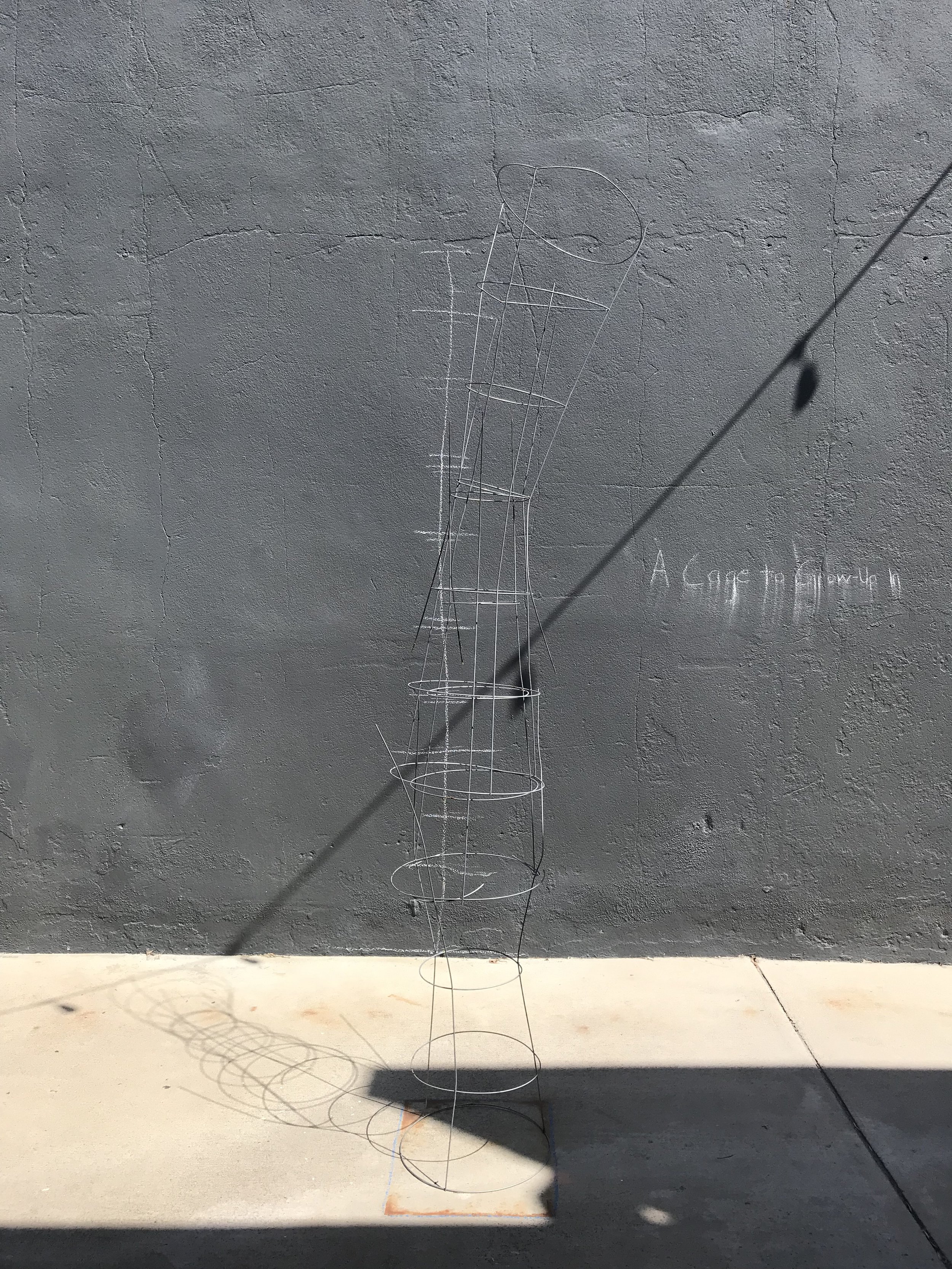







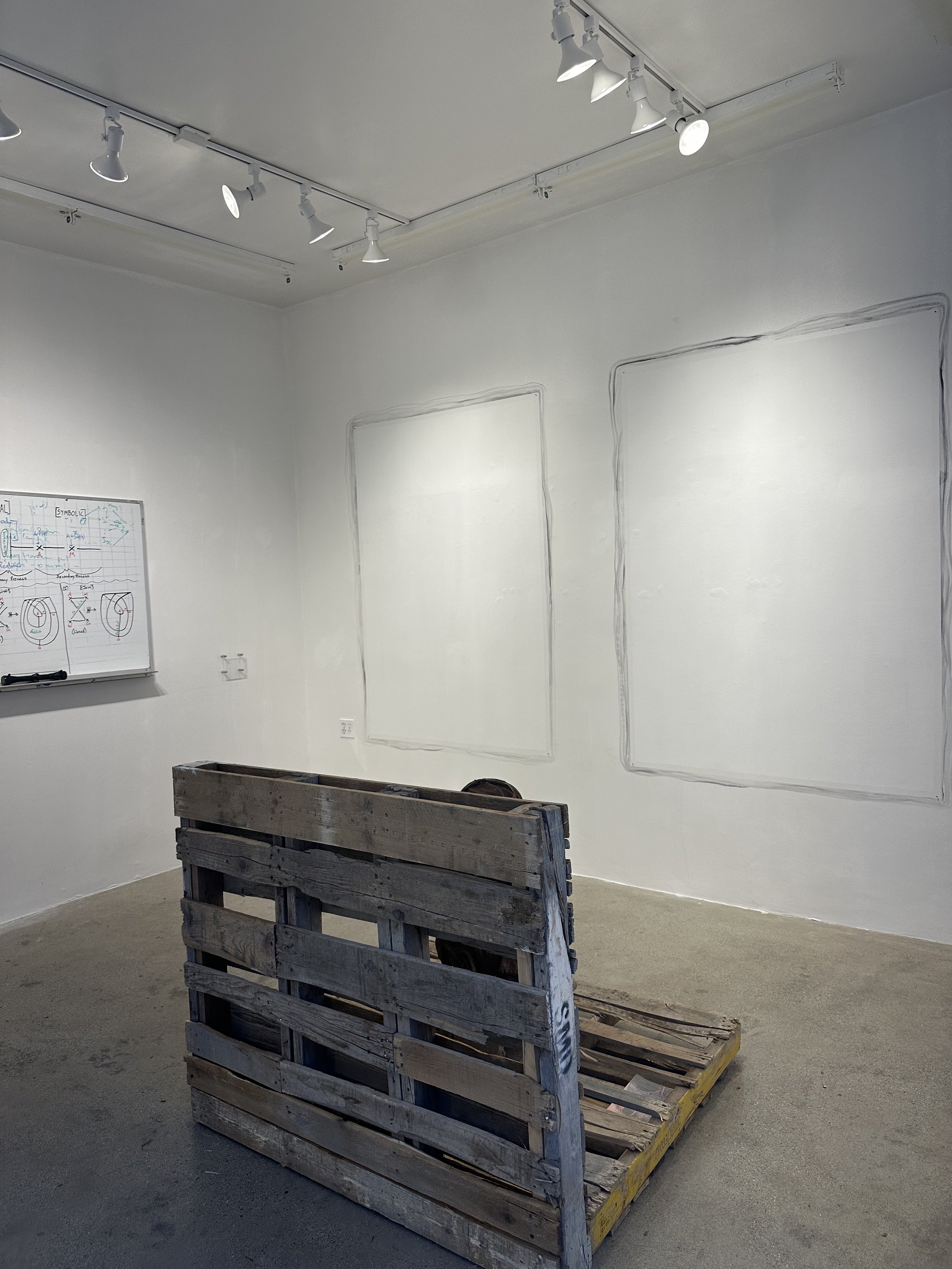
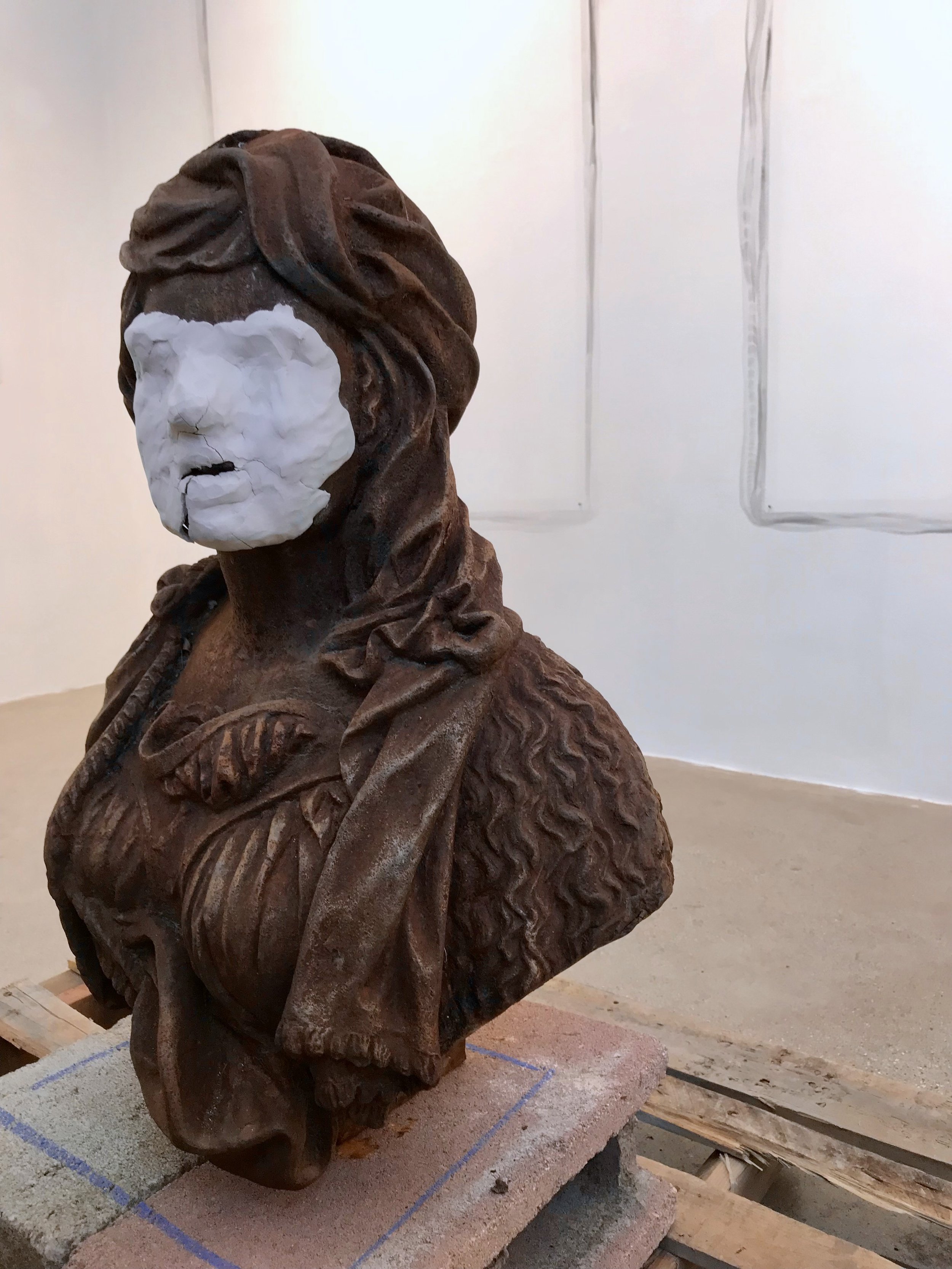








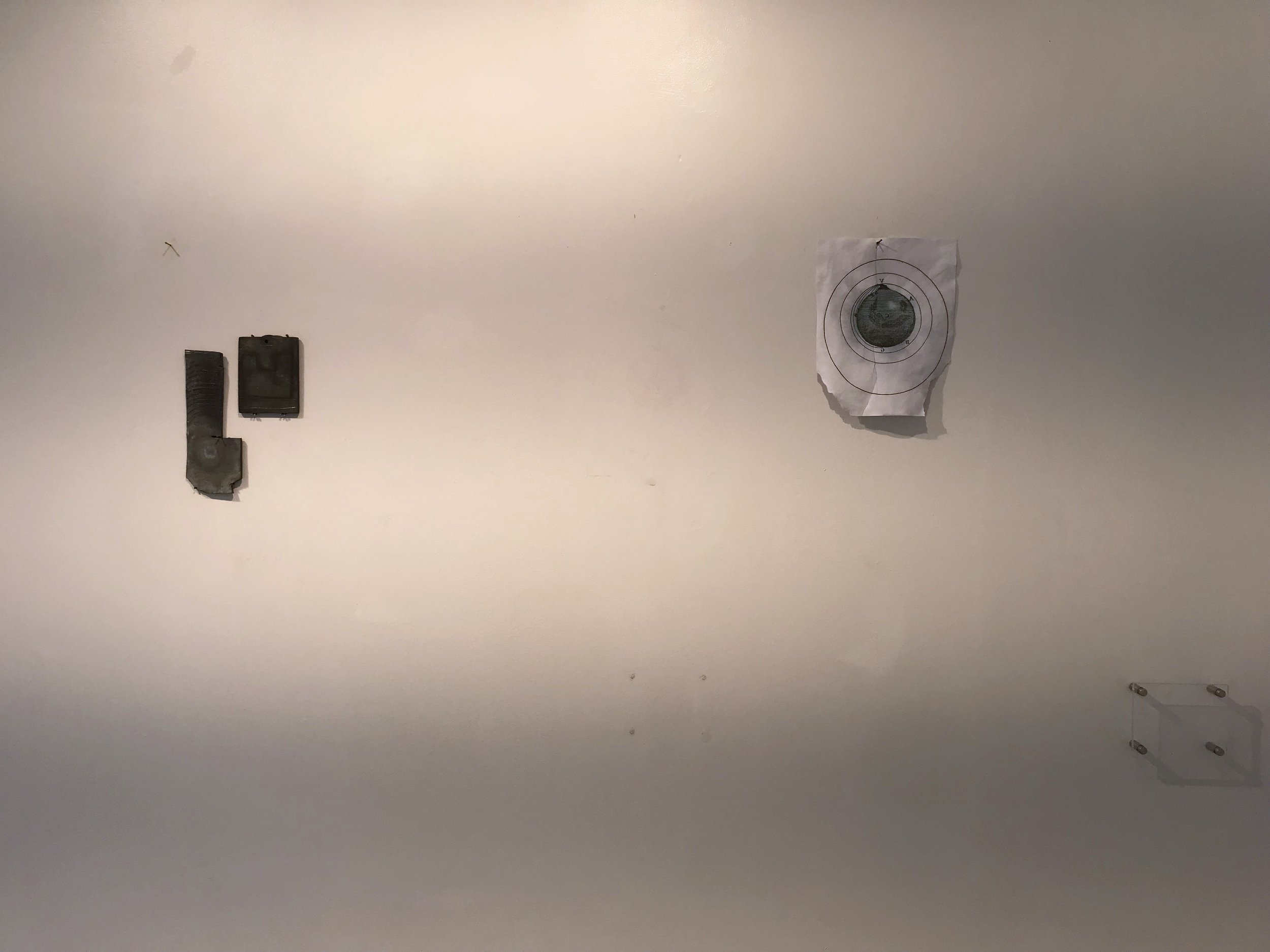
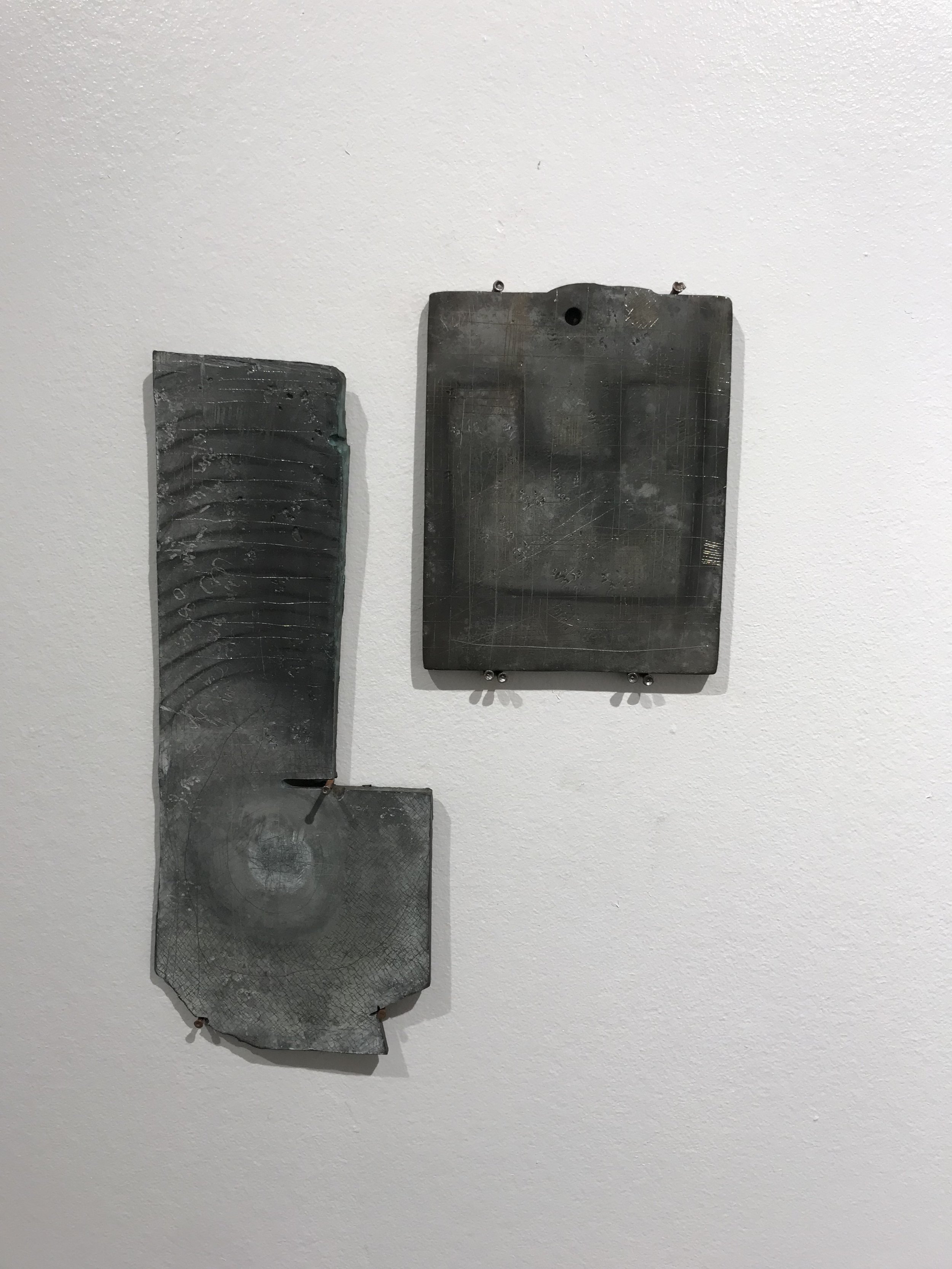


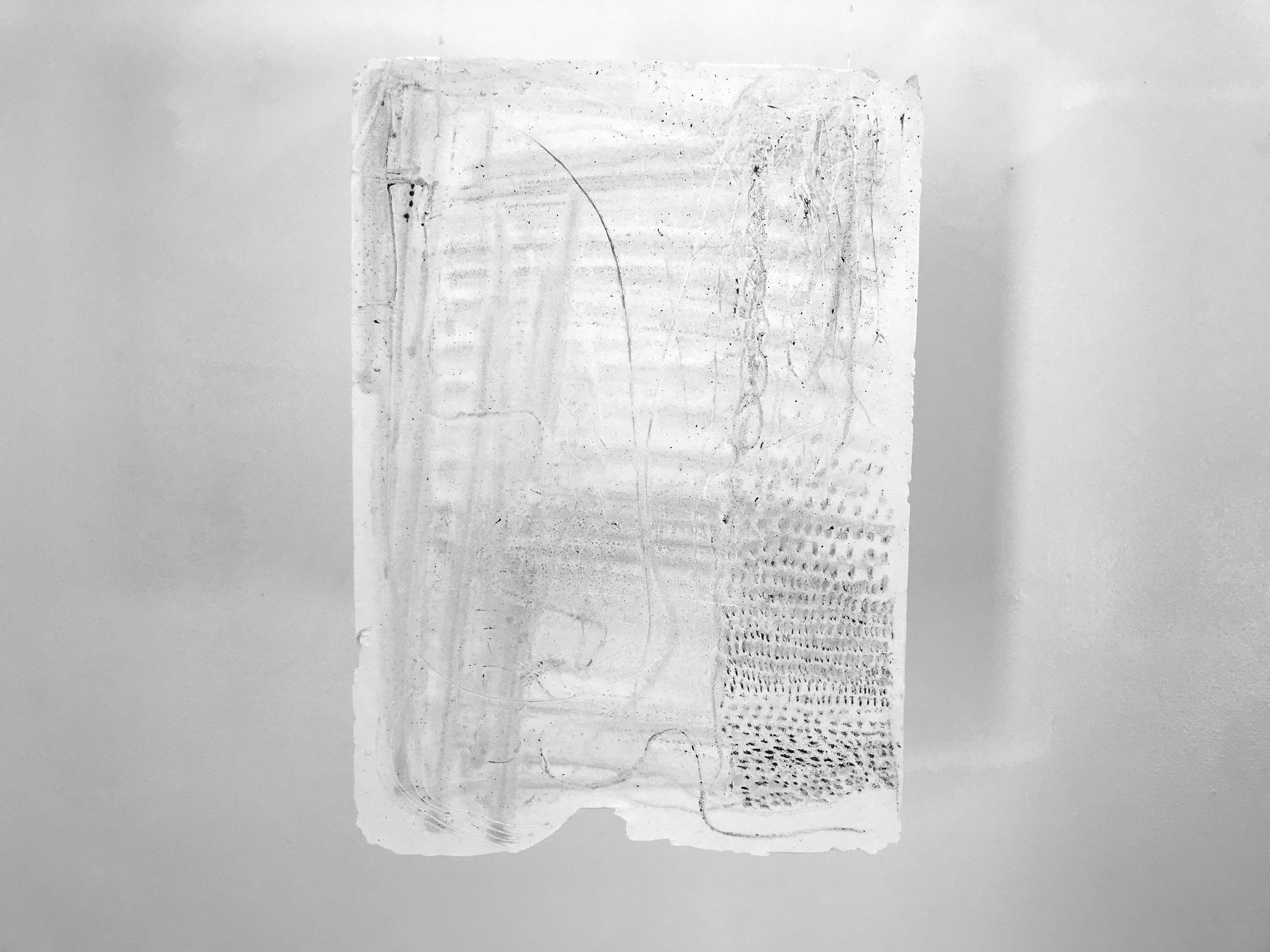

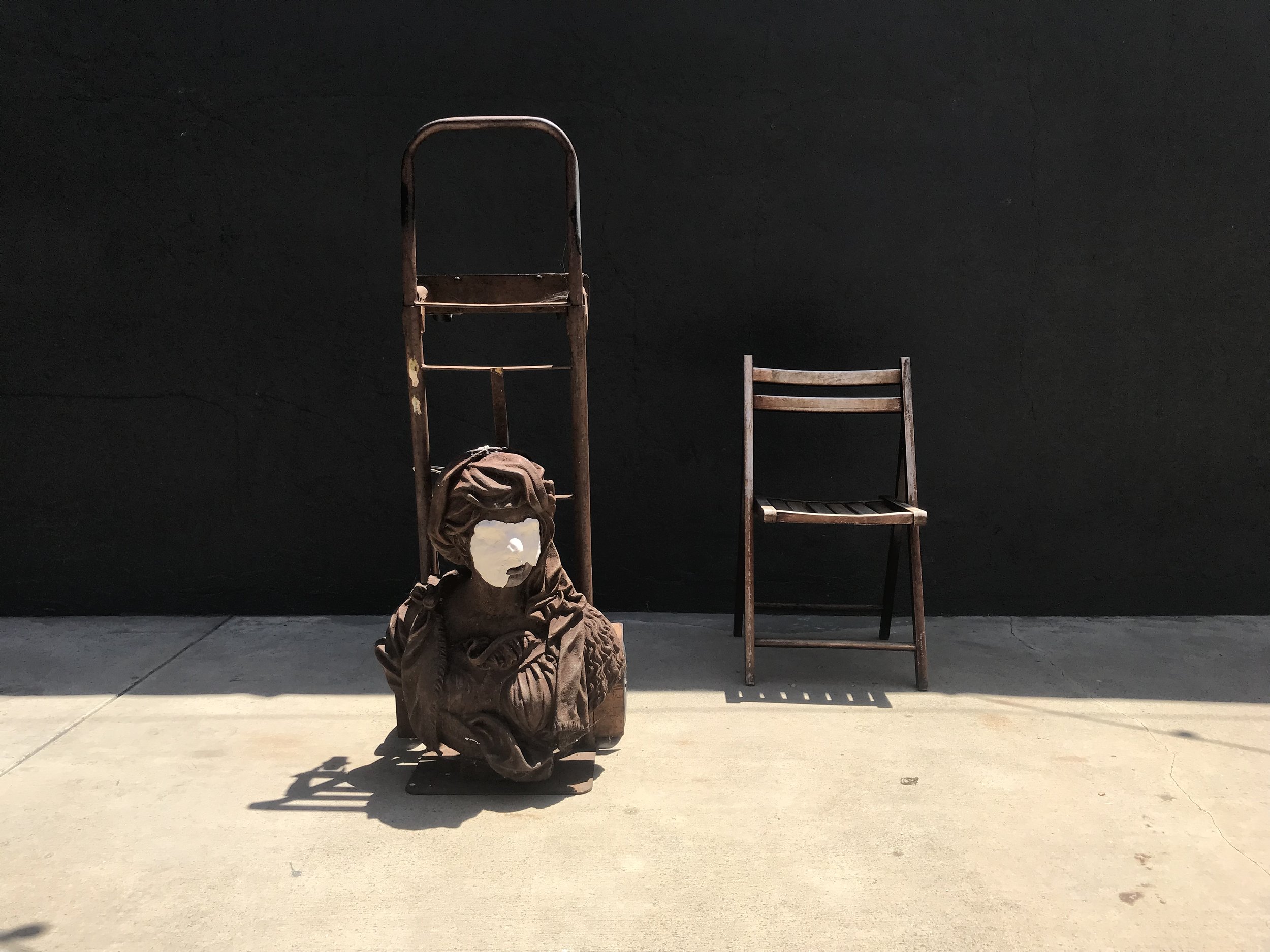
![4478. Grundrisse: Gallery Structure (1). Preliminary Materials for a Theory of the Gallery. September 28 – October 12, 2024. Installation View of 4478\ Night (0) [9/28/24. 9:08pm]. Position: Outside the gallery’s front entrance. Orientation: Facing t](https://images.squarespace-cdn.com/content/v1/619c221f6addfe04124c8b97/fb62fde0-e69f-4098-a0e5-9b9a72e35a5e/4478_+install+0.jpg)








![or the pope must have been drunk, plastered. [Detail.]](https://images.squarespace-cdn.com/content/v1/619c221f6addfe04124c8b97/03dcaef4-5679-4f83-9711-dd5753c28e65/4478_55.jpg)
![or the pope must have been drunk, plastered. [Detail.]](https://images.squarespace-cdn.com/content/v1/619c221f6addfe04124c8b97/2536a516-2c8f-4be1-9ec4-19b955c22bea/4478_46.jpg)
![or the pope must have been drunk, plastered. [Detail.]](https://images.squarespace-cdn.com/content/v1/619c221f6addfe04124c8b97/f919d25c-0ba2-4912-b94a-c80e6ed97f0f/4478_57.jpg)
![or the pope must have been drunk, plastered. [Detail.]](https://images.squarespace-cdn.com/content/v1/619c221f6addfe04124c8b97/41b4afda-a374-4f04-b2c2-ceff793b572e/4478_59.jpg)


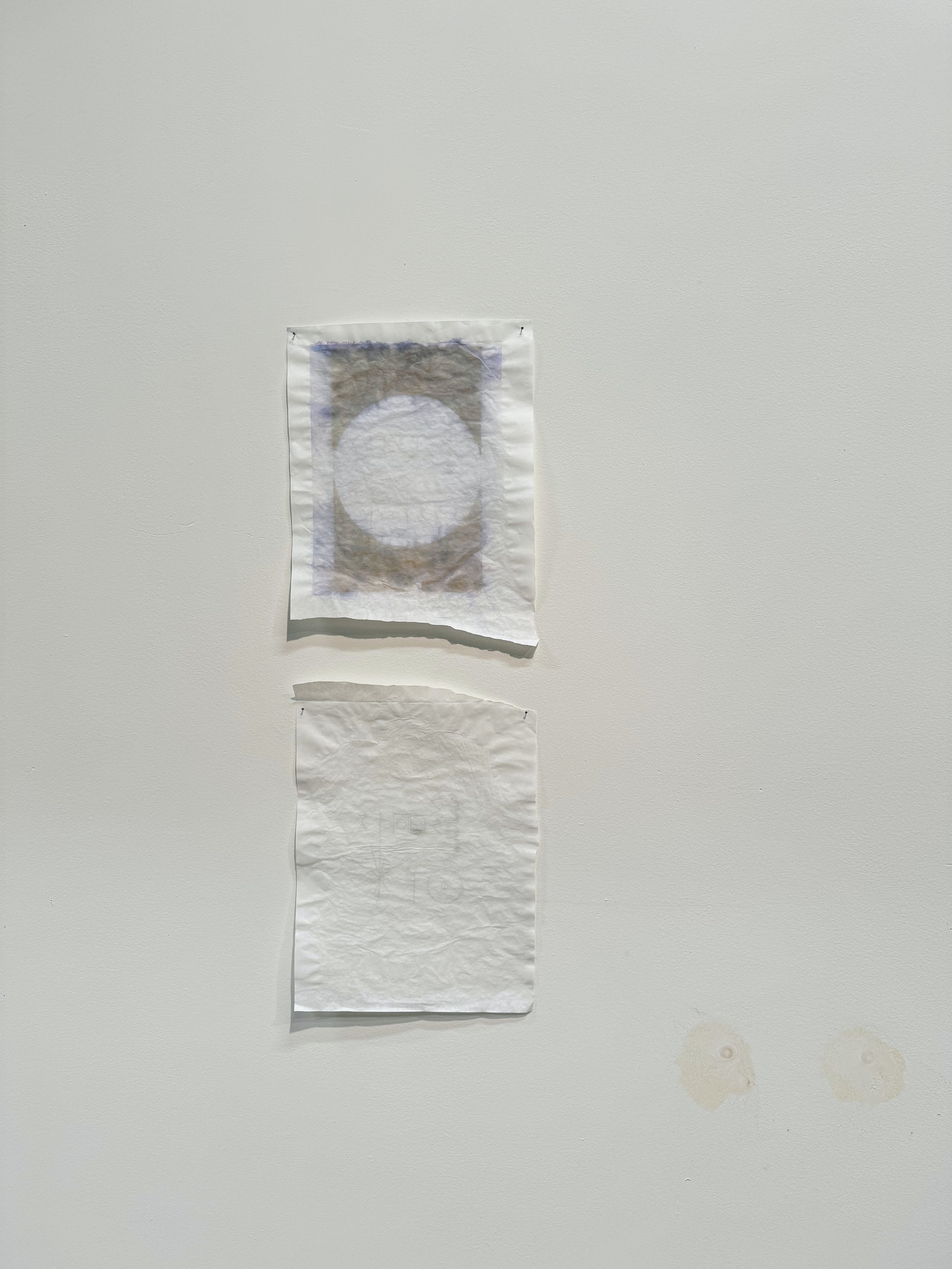


























![Woodchuck, Chuck—or, How much would? 2024. [Detail.]](https://images.squarespace-cdn.com/content/v1/619c221f6addfe04124c8b97/b755f824-1df5-4b5d-9424-8b933de5cded/4478_48.jpg)
![Woodchuck, Chuck—or, How much would? [Detail.]](https://images.squarespace-cdn.com/content/v1/619c221f6addfe04124c8b97/621fe98f-a134-4567-b8cb-9ed297ad5d8d/4478_53.jpg)











![Transfer of Wealth (Balancing Act). 2024. (Mostly) empty industrial bags, (baby)blue ribbon, pulley, latex balloons. [Detail.]](https://images.squarespace-cdn.com/content/v1/619c221f6addfe04124c8b97/c881afe7-79ed-4889-8e75-fa63b026d672/4478_67.jpg)
![Transfer of Wealth (Balancing Act). 2024. [Detail.]](https://images.squarespace-cdn.com/content/v1/619c221f6addfe04124c8b97/613828ed-3373-4871-be74-e0238d9665d0/4478_79.jpg)














































![Puddle. [With color distortion of photo caused by light in tracing box.]](https://images.squarespace-cdn.com/content/v1/619c221f6addfe04124c8b97/0e96bfbd-2e83-4c94-a818-0418a152d44f/4478_89.jpg)
![Puddle. [With color distortion of photo caused by light in tracing box.]](https://images.squarespace-cdn.com/content/v1/619c221f6addfe04124c8b97/6e356237-581e-4124-a6be-81b8aefa974f/4478_85.jpg)
![Puddle. [With color distortion of photo caused by light in tracing box.]](https://images.squarespace-cdn.com/content/v1/619c221f6addfe04124c8b97/a2faeced-bb09-465d-8320-f9d614a3ae89/4478_96.jpg)
![Puddle. [With color distortion of photo caused by light in tracing box.]](https://images.squarespace-cdn.com/content/v1/619c221f6addfe04124c8b97/cedd2fa7-0ad2-4fff-98a1-2bee17e253e5/4478_95.jpg)
![Puddle. [With color distortion of photo caused by light in tracing box.]](https://images.squarespace-cdn.com/content/v1/619c221f6addfe04124c8b97/596a4600-16fd-420c-8e46-d56ccd9d9eea/4478_98.jpg)

![Puddle. [Detail.]](https://images.squarespace-cdn.com/content/v1/619c221f6addfe04124c8b97/cd6d2693-c59e-4cc1-8193-01d1bfdb4c62/4478_87.jpg)

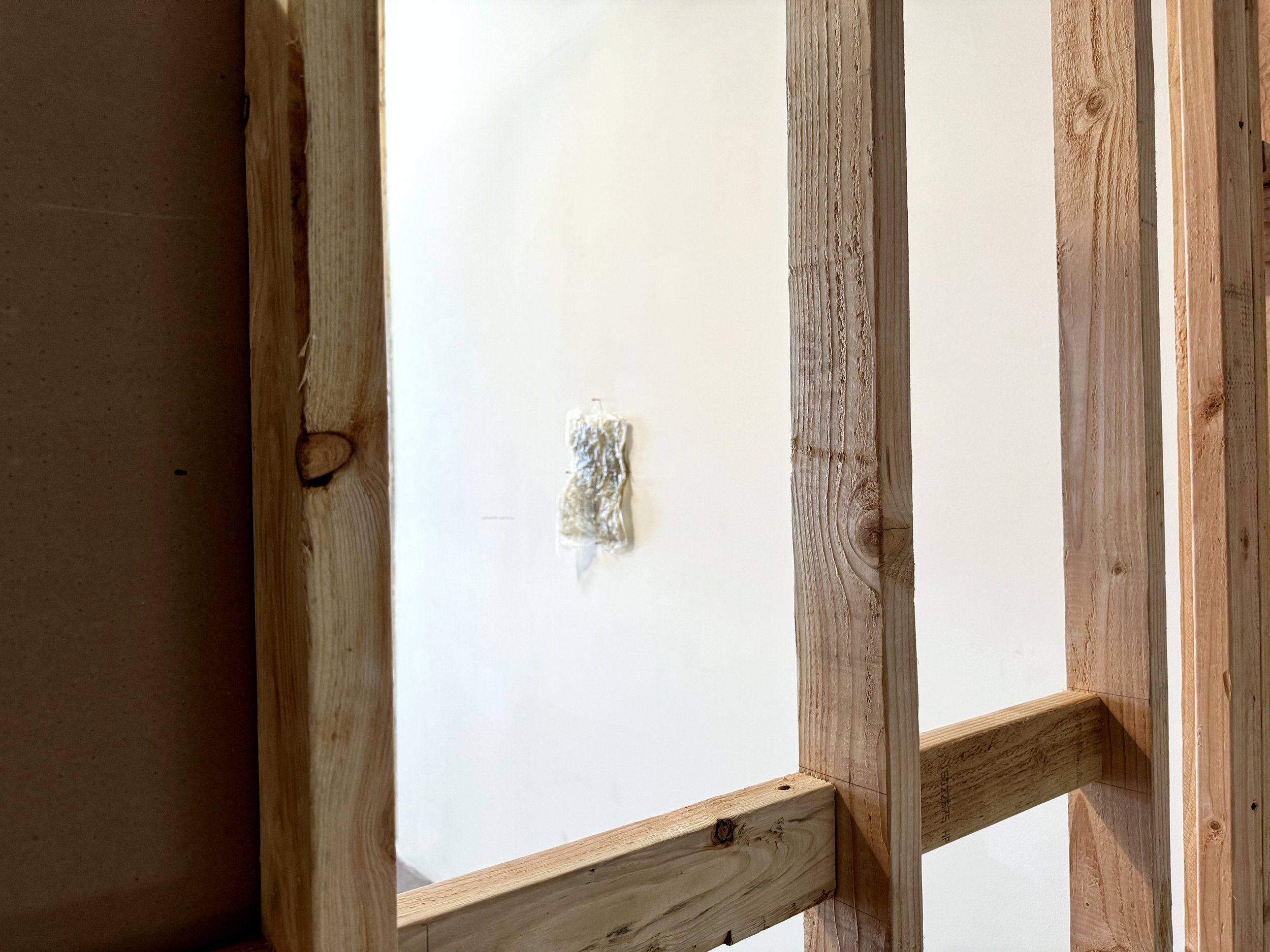





![Orthogonal. [Detail.]](https://images.squarespace-cdn.com/content/v1/619c221f6addfe04124c8b97/923aaf6a-8f39-4010-aa1d-bd66e261e6f3/4478_84.jpg)
![Orthogonal. [Detail.]](https://images.squarespace-cdn.com/content/v1/619c221f6addfe04124c8b97/5d6f6ca1-1813-4f02-b823-5e9607346749/4478_86.jpg)













![Scrimshaw—or, Dog Years. [Detail.]](https://images.squarespace-cdn.com/content/v1/619c221f6addfe04124c8b97/d88ad8f9-8d21-40d5-8d4b-3166b9e97083/4478_65.jpg)

































